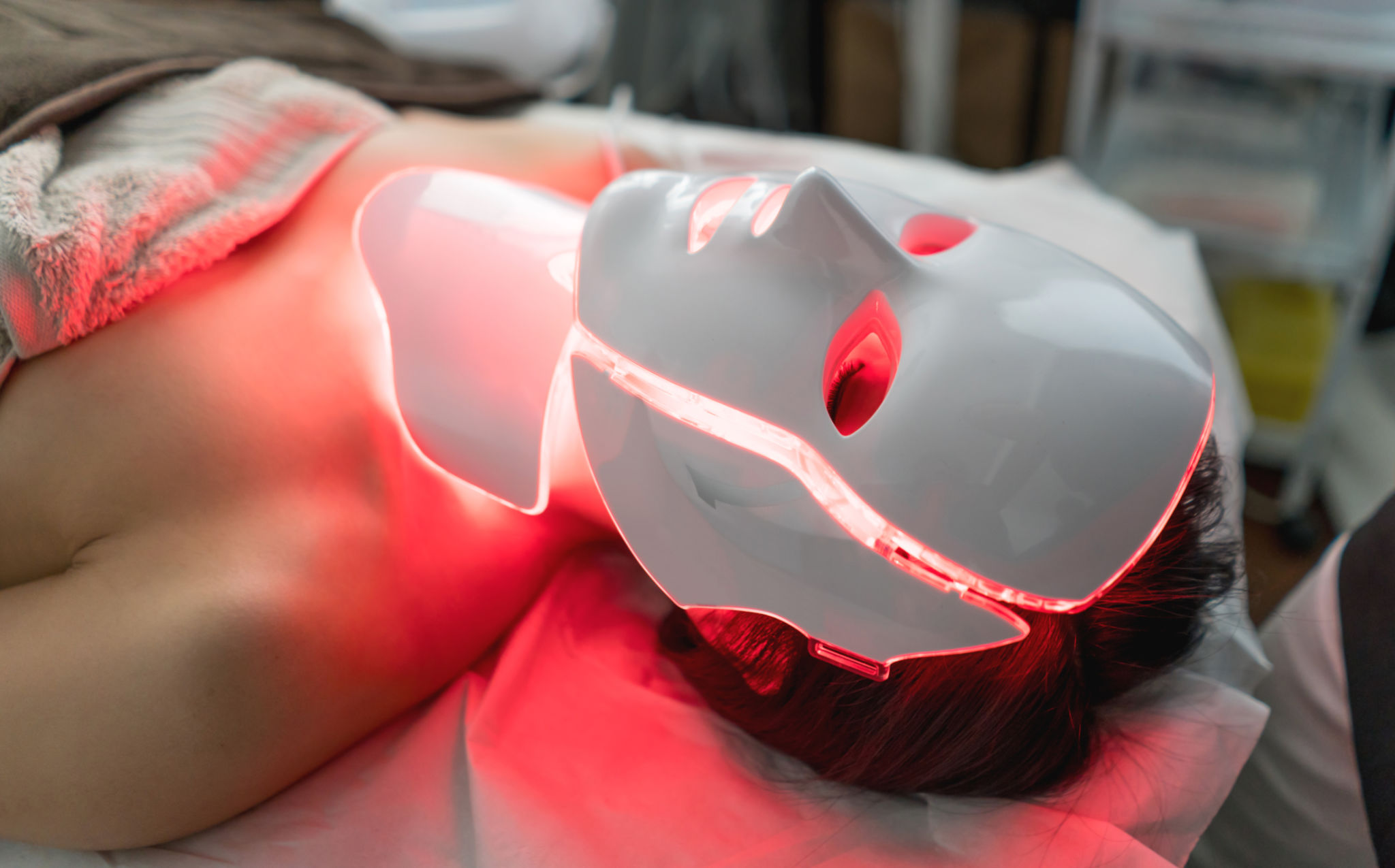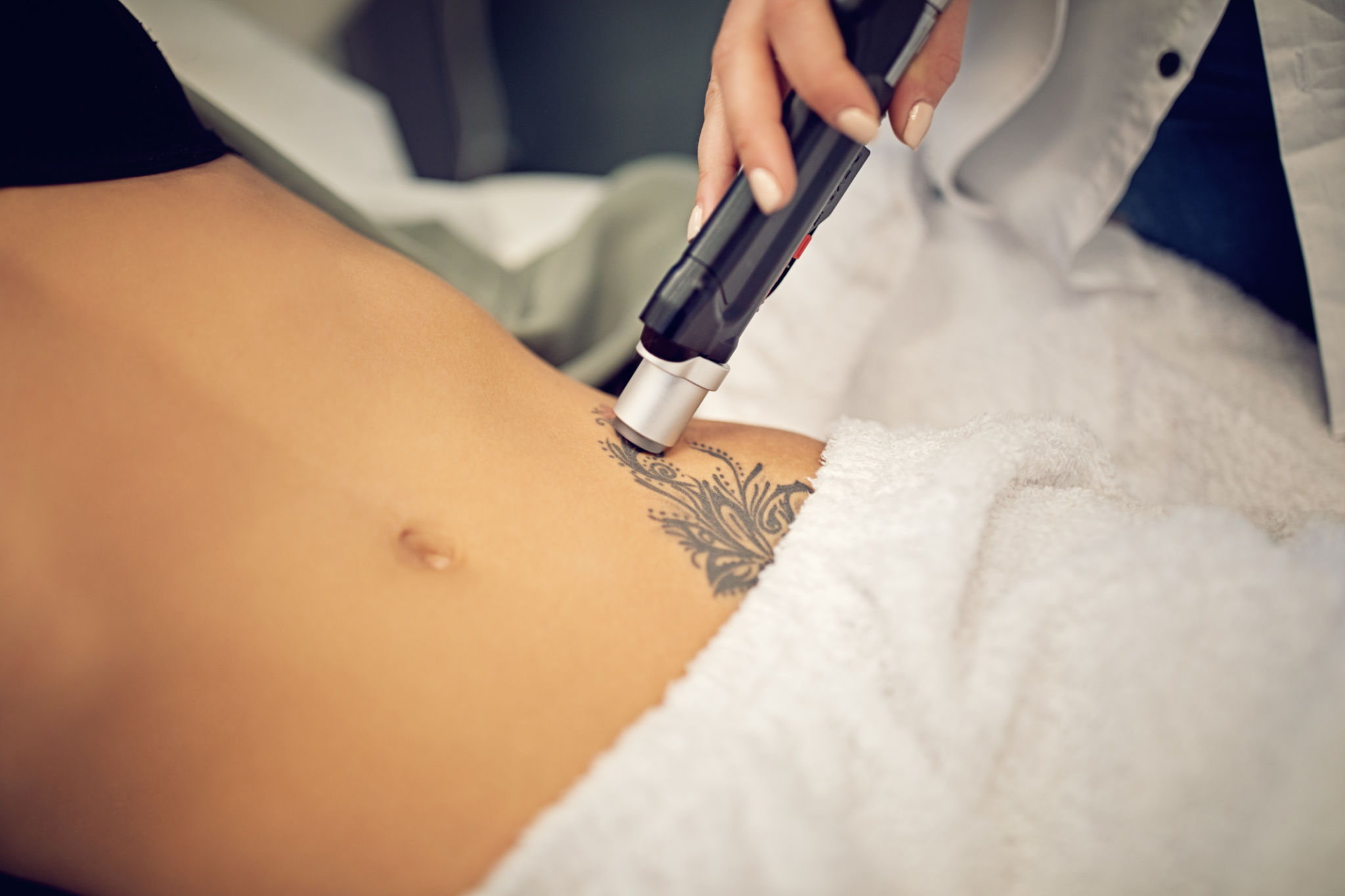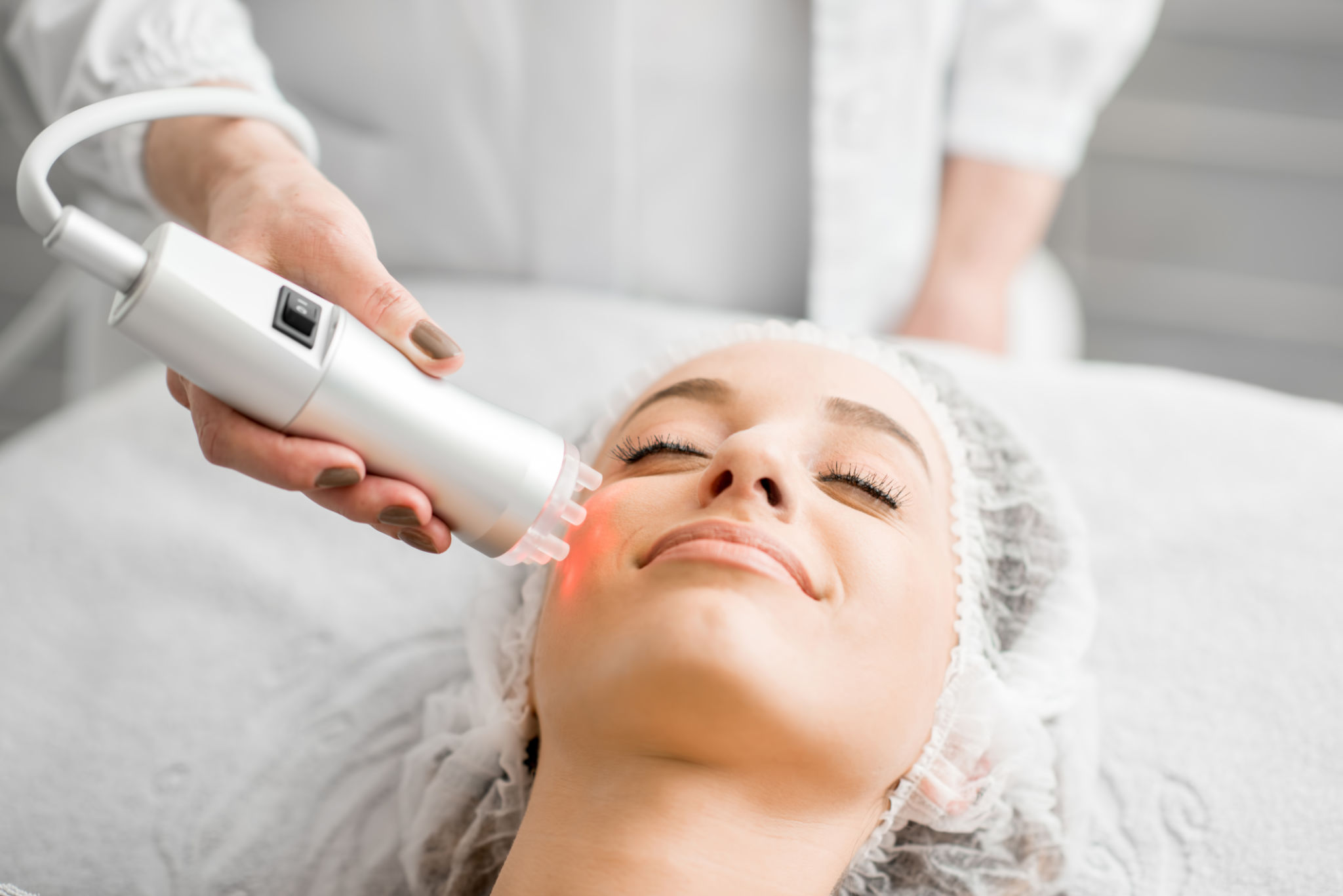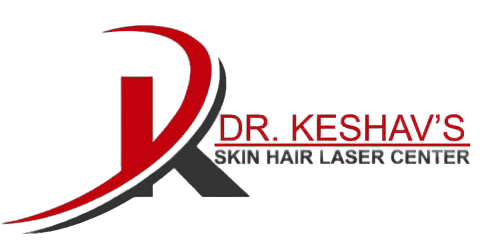What is Laser Treatment
Lasers are medical devices that use a direct beam of radiation to penetrate the deeper level of the skin, called the dermis, and create a reaction. Lasers treatments address a variety of conditions, including unwanted hair (laser hair removal), uneven pigmentation, and broken capillaries or spider veins and dull pitted skin.
There are several types of lasers. Each laser has specific uses. The color of the light beam used is directly related to the type of surgery being performed and the color of the tissue being treated. Types of lasers include the carbon dioxide (CO2) laser, the YAG (yttrium aluminum garnet) laser, alexandrite, KTP, and the pulsed dye laser.
Lasers and other light-based devices are used to treat these conce
- Age sunspots, blemishes
- Warts, moles
- Dark circles under the eye
- Dry, dull skin
- Fine lines
- Freckles
- Hand rejuvenation (age spots, loose skin, and lines)
- Melasma
- Redness and flushing
- Scars
- Seborrheic keratoses (flat only)

- Skin texture (treats roughness)
- Skin tone (treats mottled complexion and skin discoloration)
- Spider veins
- Stretch marks
- Tattoos (removal)
- Unwanted hair
- Varicose veins
Laser tattoo removal

Laser tattoo removal usually refers to the non-invasive removal of tattoo pigments using Q-switched lasers. Typically, black and darker-colored inks can be removed more completely.
Q-switched lasers used to shatter tattoo pigment into particles that are cleared by the body’s lymphatic system. Full removal can take between six and twenty treatments depending on the amount and colour of ink, spaced at least a month apart, using different wavelengths for different coloured inks. Nd:YAG lasers are currently the most favoured lasers due to their high peak powers, high repetition rates and relatively low costs.
Laser Skin Rejuvenation
Today’s lasers can diminish many signs of aging — from early wrinkles and age spots to deep lines and spider veins. A laser procedure often can be performed in less than an hour and may require little or no downtime.
Numerous lasers and light devices are used to rejuvenate the skin. These devices are generally grouped into the following categories:
- Non-ablative laser rejuvenation– No downtime. Best for early signs of aging.
- Intense pulsed light (IPL)– Not a laser, this light therapy penetrates deeper into the skin than a non-ablative laser. IPL does not injure the surface of the skin, so there is usually no downtime. IPL can improve skin texture and color as well as reduce pore size.
- Photodynamic therapy (PDT)– This is a two-step procedure. First, a solution that makes the skin more sensitive to light is applied and left on for 30 minutes or longer. Then light from the laser or other source is beamed onto the treated area. Downtime is minimal. PDT decreases redness, reduces age spots and freckles, and improves the overall texture and appearance of the skin.
- Fractional laser rejuvenation– Offers deeper rejuvenation. Recovery time is short. Best for diminishing signs of aging such as age spots, wrinkles, and skin discoloration.
- Ablative laser resurfacing– Heats the skin to cause a visible wound, which means some downtime for recovery. Effective for deeper wrinkles and diminishing aging caused by years of unprotected sun exposure. A type of laser called a fractional ablative laser causes no visible wounds. Fractional ablative laser resurfacing requires less downtime than ablative laser resurfacing.

Juvederm XC – Juvederm XC is the only dermal filler in India formulated with lidocaine,a common anesthetic ,to provide a more comfortable experience during and after treatment.It provides smooth and natural –looking results that you expect with the improved comfort you.
Juverderm Ultra – The Juvéderm® ULTRA range of products is a new generation of hyaluronic acid fillers from ALLERGAN, a world leader in surgical and non-surgical aesthetic products. They use a specially formulated type of hyaluronic acid (HA) that exists naturally in your skin.
Photo Facial
Photo facial is a generic term for a skin treatment that uses some kind of light-based technology. Photo facials have a number of different uses, but are mostly used for treating brown spots, broken capillaries, and boosting collagen.
The two main types of technology used for photo facials are LED (light-emitting diode) and IPL (intense-pulsed light).
An LED photo facial is a very gentle treatment that uses narrow spectrum light to boost collagen, which creates plumper, younger-looking skin, or to kill the bacteria that causes acne. LED photo facials are painless, cool and relaxing, and carry no risk of burning. The best results come after a series of photo facial treatments. To begin, a series of six treatments with a one-to two weeks between is recommended. After that, maintain with a treatment every month or two. It can be part of a facial or a stand-alone treatment.
IPL stands for Intense Pulsed Light. Also known as a “photofacial” treatment it delivers broadband light through the skin for Skin rejuvenation. IPL helps restore a youthful looking skin intended for photo aged or sun damaged skin. It helps decrease facial redness, lessen the appearance of pigmented spots, reduce pore size and improve texture and fine lines.
An IPL photo facial is the better choice is you have brown spots, broken capillaries or overall redness, called diffused facial redness. The number of IPL photo facials you need will vary depending on the condition you’re treating, the results you want, and how your skin responds.
Laser Hair Reduction
A number of lasers and other handheld light devices have been developed specifically for hair removal. These devices offer long-lasting hair removal and some permanent hair reduction. When the hair re-grows, it tends to be finer and lighter.
The lasers and other light devices designed for hair removal can be used on most parts of the body. Many of these devices effectively treat large areas. When light from the laser or other light device hits a hair, the light vaporizes the unwanted hair. A 10% to 25% reduction can be expected after 1 treatment. Repeat sessions, usually 2 to 6, are required to see the best results. A session is usually performed once every 4 to 6 weeks.
People often choose laser hair removal for their Back, Bikini area, Chest, Face (especially the upper lip & chin), Neck, Shoulder.


